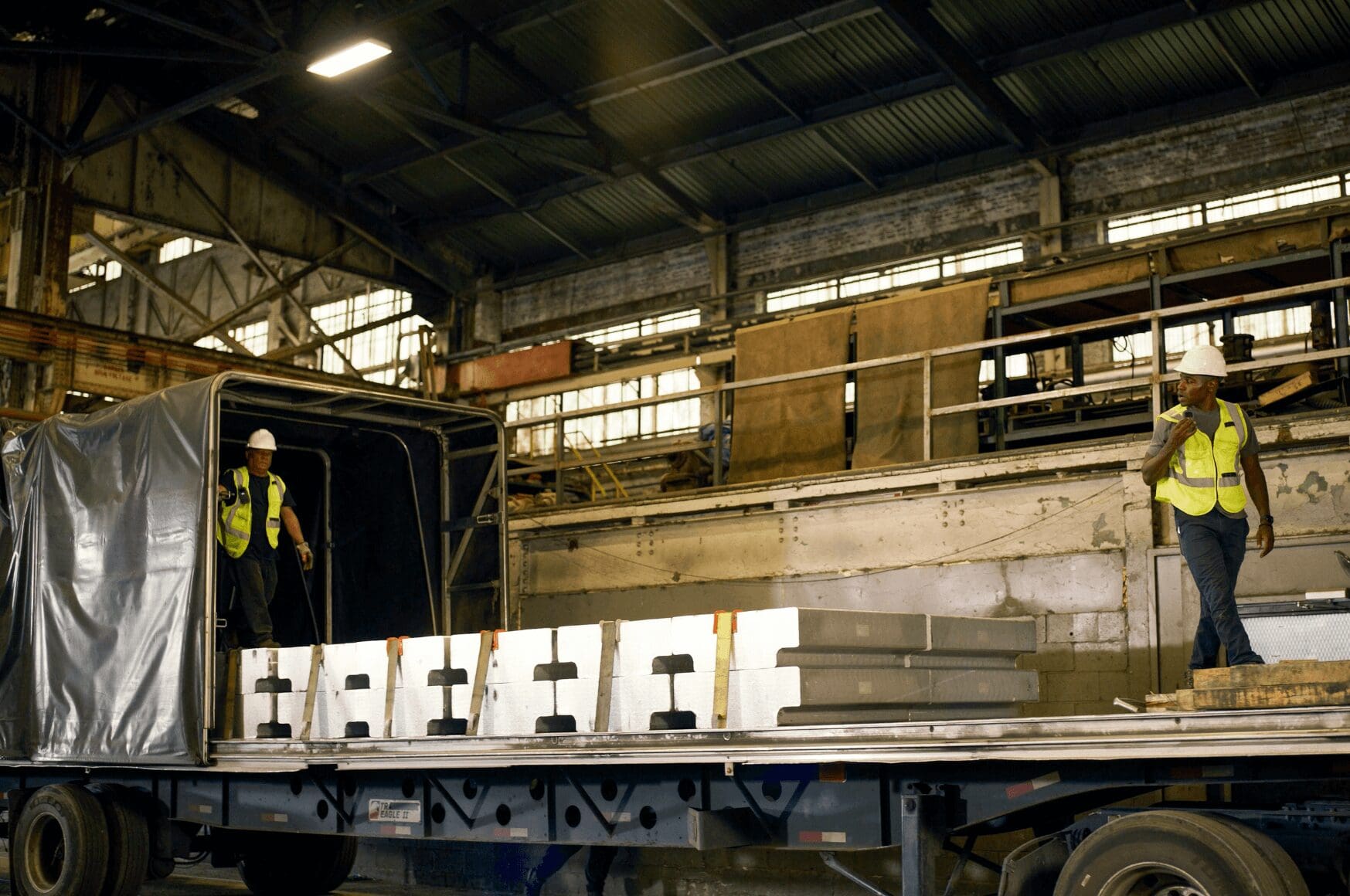For many businesses in the manufacturing world, productivity is the key to success. However, team productivity can quickly become stagnant on the production line without the right processes and strategies in place.
Rather than cracking down on your employees, it’s a better idea to look at proven strategies for boosting productivity. After all, several of the following tips will do much more than just improve your team’s productivity; they’ll also make your employees feel more connected to their team and roles.
How to Improve Productivity in Manufacturing
Before you consider how to improve productivity in manufacturing, let’s look at the impact of boosting employee morale. Doing so is one of the best ways to provide reliable productivity improvements without risking your frontline workers. It’s a delicate dance that must take your business and workers into account. But if you get it right, you’ll create a manufacturing team that people will be lining up to join.
1. Boost Your Employee Appreciation Efforts
Working on a manufacturing job often involves doing the same motions over and over again. As time goes on, even your best employees may start to drag. A study by UKG found that 83% of Gen Z frontline employees are burned out at work, with over one-third of those more likely to quit because of it.
How can you make employees feel reinvigorated? By boosting your employee appreciation and recognition efforts. Consider celebrating important achievements and milestones in each employee’s life. Furthermore, hand out kudos and awards publicly, so that each of your workers takes pride in their job, while still having a goal to chase.
2. Improve Communication Between Team Members
Manufacturing lines are often loud and things are moving quickly. Teams don’t have much time to spare, so effective communication tools are a must. Consider industrial solutions like smart radios, which allow for both group or private communications. These are often equipped with added features like safety workflows, real-time language translation, and location tracking. Together, these enhancements promote better team communication than a cell phone or traditional radio on and off the production line, and can be extremely useful during critical moments.

3. Give Employees Professional Development Opportunities
Although some of your floor staff may be content to stay where they are, the odds are high that a lot of your manufacturing team is interested in climbing the ladder. Therefore, it’s wise to offer mentorship programs, along with encouraging cross-training.
Another good idea is to offer specific training programs that can take your workers to the next level. By investing in employee training, you can benefit from a 17% increase in productivity. Furthermore, you can cut down on hiring costs by adding additional training programs. In fact, more than 90% of workers say that offering professional development opportunities would prevent them from quitting.
4. Create a Positive Workplace Culture
If you’re interested in increasing productivity, choosing to foster a workplace culture that is positive and open is the way to go. This includes maintaining an open-door approach to management. Make sure your employees feel empowered to come to you with their concerns and actively seek feedback via surveys and team meetings.
When it’s time to provide constructive feedback, focus on doing so in a respectful, timely manner. Raising your voice or using a harsh tone is not going to help them learn either. Instead, it can lead to anxiety, stress, and disengagement. If you really want them to absorb your message, make your expectations clear, practice empathy, and listen more than you talk.
Additionally, consider celebrating your inclusion and diversity, so that every employee knows that they’re valued.
5. Empower Your Employees to Make Decisions
Line workers have very little room to make their work their own, so look for other opportunities to empower your employees. For example, although they have to follow certain guidelines to reach their goals, why not involve them in choosing their goals in the first place?
Another thing you can do is give them the autonomy to make their own decisions about improving their job. After all, they work on the line, so they’re most likely going to understand their job functions and frustrations better than you do.
6. Provide Incentives for Increased Productivity
Providing incentives almost always increases productivity, especially when deadlines are tight. For instance, let’s say an automotive client suddenly requires their parts order in half the usual time. To temporarily increase output, consider tying performance to meaningful rewards.
One example to keep teams motivated is to offer a bonus or other perks for every 100 units your team finishes. If your workers make $20 an hour and usually complete 75 units per day, perhaps you could offer them an extra $50 if they hit 100 units daily until the pressure is off. However, make it clear that any incentives are contingent on meeting established quality standards, thereby making sure that rushing doesn’t lead to rework or errors.
Additionally, improving worker efficiency through incentives can help complete the project faster, reducing the need for costly OT while keeping daily operations on track.
7. Regularly Maintain All Essential Equipment
One reason that many manufacturing plants have a difficult time boosting productivity is because their essential equipment breaks down at the worst times. Imagine that you’re trying to achieve a workplace incentive, but faulty equipment keeps getting in the way. This may make you feel frustrated and angry, or want to simply throw your hands up and walk away.
Prevent problems with your essential equipment by regularly making time for it to be inspected and maintained. Once you look at the cost of contending with these issues before they can hold up your floor team, versus the expense of having critical workers forced off the line, it becomes easy to see that investing in preventative maintenance will cost a lot less.
8. Implement Wellbeing Initiatives
A common but wrong way to think about boosting productivity is through requiring employees to work longer shifts. Instead, by putting wellbeing initiatives in place such as health screenings or fitness classes, you can actually improve worker productivity and morale.
Remember that it’s important to encourage your employees to take vacations, along with scheduling short, regular breaks. By giving your line workers a 15-minute break every two to three hours, they’ll mentally stay fresher and can put more of themselves into their job.
If you’re asking yourself ‘how does giving employees more breaks boost productivity,’ then it’s time to learn about a 2022 study that definitively linked more breaks with increased productivity. The study concluded that the roadmap to greater success includes taking small, frequent breaks.

9. Identify and Remove Bottlenecks
Bottlenecks include any breakdowns in your supply chain or production line. When a bottleneck rears its ugly head, your floor workers won’t be able to accomplish as much, through no fault of their own. A prime example of a bottleneck is a critical piece of equipment being down.
Another example is an overly zealous floor manager who requires all approvals to go through them but then doesn’t make themselves available to workers for a full day. Rather than making 500 floor workers wait for one manager’s approval, you should always have a backup plan to keep your manufacturing plant running smoothly. Even language barriers could be causing communication bottlenecks among your workforce, leading to production delays and potential safety risks.
10. Better Organize Your Workplace
Are there certain tools that your workers can never find? How about a critical form that is never where you left it? Both of these issues can be solved by thoroughly organizing your workspace. Make a definitive place for lesser-used tools, along with a specific area for all your business forms.
Each employee should know exactly where to find anything they may need to complete their job as quickly as possible. Otherwise, productivity comes to a halt as they’re forced to waste time looking for a specific tool. As their leader, it’s critical to make sure your team has nothing holding them back. Proper organization might take a while to put in place, but once it’s done, your entire workplace will benefit from it.
Improve Manufacturing Efficiency
Boosting your workplace productivity will also make your manufacturing plant more efficient. As you’ve now learned, the path to boosting efficiency and productivity isn’t to crack down on your workers. Instead, it’s to make things as easy as possible on your team, while also providing opportunities for professional development.
Essentially, you must remember that each of your workers is a human first. Creating a positive workplace will improve morale, as will offering incentives to temporarily boost productivity. Identify and remove any bottlenecks that stand in the way, along with placing an emphasis on improving communication between your employees.
Speaking of communication, turn to Relay’s manufacturing communication system to provide a durable and reliable way to keep your team constantly in touch with each other. Even if they don’t all speak the same language, they’ll still be able to fully communicate with TeamTranslate™. Learn more about how Relay works in the video demo center or check out a few success stories!







